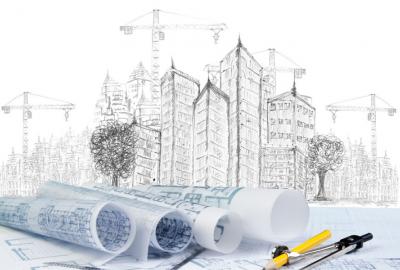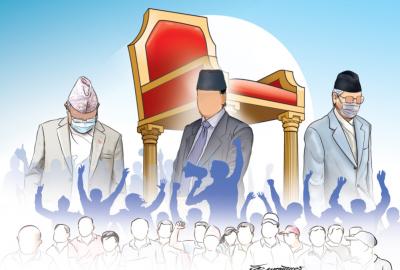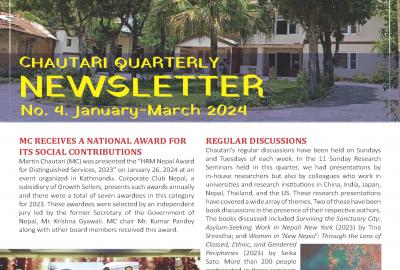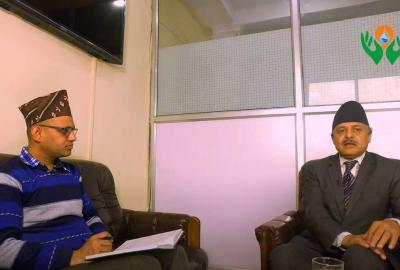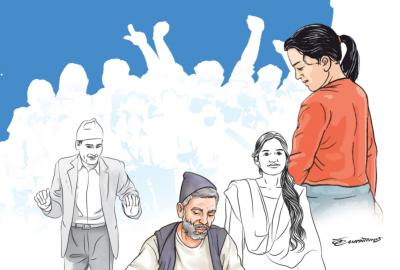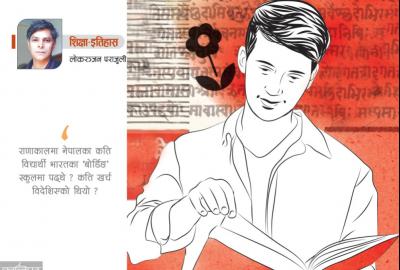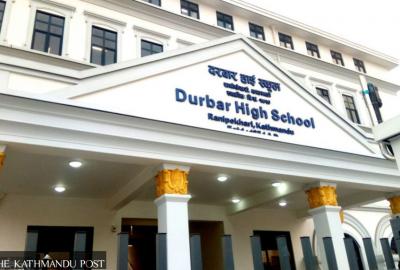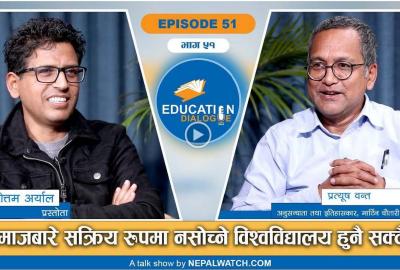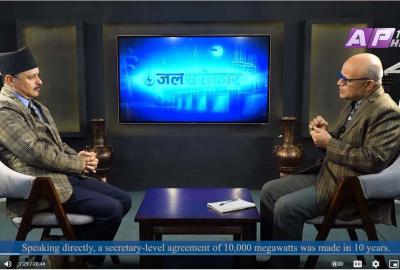Nepal needs more diverse historical works on schooling that go beyond state-centric perspectives.

Our knowledge of the history of school education in Nepal is rather limited. When some colleagues compiled a list of nearly 150 PhD dissertations completed by 2016 at various universities across the globe on Nepal’s education, they found that only a few focused on aspects of the history of its school education. Popular histories of school education usually note that Prime Minister Jung Bahadur Rana started the Durbar School after returning from his Europe trip in the mid-19th century. They then note that one of Jung Bahadur’s nephews, Dev Shamsher Rana, started Bhasha Pathshalas (namely, schools that taught in Nepali as opposed to Sanskrit) during his short reign in 1901 before his successor, Chandra Shamsher, shut down that initiative.
The Ranas continued to restrain the starting of new schools to the extent that when their regime ended in 1951, there were only about 500 schools in the entire country. After 1951, the number of community-established schools increased significantly, but their governance was nationalised by Panchayat’s New Education System Plan (NESP) in the early 1970s. In 2001, Panchayat’s mistake was redressed by the adoption of a policy to return the management of public schools back to the communities in which they were located.
This skeletal history of governmental policies and their politics regarding schooling needs to be filled with serious works that give us non-state-centric plural histories of schools and schooling in Nepal. How might we produce such histories? This can be done in many different ways. Let me point out a few possibilities. Such histories can be written from a number of social science disciplines, and their focus can be on specific schools as institutions, school localities (a village, city or region) and contributors (school founders and teachers). Since ours is a society with differential opportunities, the research can also focus on the histories of unequal access to schools based on gender or between members of various social groups.
We can also look at the historical discourses around school education. For instance, we can inquire about the voices that opposed school education for girls during the middle decades of the 20th century (covered in a 2022 article by Lokranjan Parajuli), but more research is needed, including how there was opposition to the idea of co-education of boys and girls later.
First, researchers could start by producing detailed histories of specific schools. Although there are a few memoir essays or chapters on the Durbar School—the memoirs of Balkrishna Sama, Bhim Bahadur Pandey, Kamal Dixit and others—it is a shame that we do not have even one full-length account of this important school. It is the same with many other older schools, even those in the Kathmandu Valley. Magazine-length smarikas about some of these schools have been produced to celebrate their golden and diamond jubilees, but their analytical histories have not been written.
There are examples from elsewhere that we could try to emulate. Take for instance, a book about a school in Delhi, The Modern School (1920-2020): A Century of Schooling in India (2020). Written by historian Rakesh Batabyal, this 400-page tome starts by declaring that Modern School “has been an integral part of the modern history of India’s capital and a significant element of the sociocultural horizon of the nation itself.” In the Nepali context, much the same could be said about Kathmandu’s Durbar School or Juddhodaya Public (JP) School (founded about 85 years ago). Batabyal proposes a model of institutional study “that sees the school as intimately connected with the changing nature of family, society and nation over the past one hundred years.” He then goes on to provide a good history of the Modern School by focusing not just on the school as an institution and the personalities that led it but also on the changing dynamics between the school and its sociocultural context.
Second, researchers can write about schools in a specific locality. Here Bhaveshwar Pangeni’s documentation of schools in Kirtipur in Shikshako Itihas: Kirtipur Kshetrako Shaikshik Itihas (2073 BS) is a significant contribution. But upcoming works could document not only the institutional histories of schools per se but also analyse how a school or sets of schools in a specific location were “related” to the main social constituencies in the locality. Such research is being carried out by Sanjila Moktan, a researcher at Martin Chautari, for the case of Dapcha in Kavrepalanchowk, less than 40 km from Kathmandu. A Bhasha School was started in Dapcha in 1929, but the Bahuns, Newars and Tamangs in the area had differential relationships with it. As Moktan shows in a forthcoming article, Bahuns and Newars enrolled in the school in its early years. On the other hand, Tamang students had no access to this school until the post-Rana years, even when a few influential local Tamang men were involved in the school’s governance structure.
Third, researchers can write about specific individuals and initiatives. A possible example here could be the case of Gopal Pandey “Asim” and his initiative, Nepal Shiksha Parishad founded in August 1951, claiming that Nepal needed a “Rastrabhasa Shiksha Pranali”. Through the initiative, Pandey proposed a system of school and higher education based on the Nepali language. This Pranali was approved by the Government of Nepal in 1952, and the Parishad subsequently institutionalised it. Students could opt for this exclusively Nepali language-based system in place of the mainstream school system that included curricula in English as well.
Although Pandey could not implement his Pranali in higher education, his scheme operated at the school level for over 20 years until Panchayat’s NESP shut it down. The major questions the research on this Pranali could seek to answer would include: What was the vision of Pandey in founding this initiative and what were the historical influences on him at work? How was the proposed system planned, socially and legally approved and realised? What were the contents of its curricula, and what inspired the students to enrol in this Pranali?
With respect to the founding of specific schools, researchers can document the demands that led to their establishment and look into the ideas of their founders. They can also ask how specific sets of individuals actualised them in the form of new schools or used existing schools to expand opportunities for education for students who had hitherto been “missing” from those schools.
What kinds of sources might researchers use to produce such histories? First, they will have to find existing unpublished documents held in old schools. Second, they must consult relevant newspapers and periodicals, some of which are now available online or can be read on microfilm reels. After that, researchers must read other published writings in the form of essays, memoirs and (auto)biographies. Among the published sources, smriti-granthas (collections of essays written by others on the remembered life of a departed person) will be very useful. Fourth, they will have to read regular publications of the concerned schools and the occasional smarikas brought out to celebrate various milestones. Finally, researchers will have to do oral historical interviews with former students, teachers and community members.
Possibilities galore, but are there any takers?
Published at : March 14, 2024
https://kathmandupost.com/columns/2024/03/14/plural-histories-of-school-education
https://kathmandupost.com/columns/2024/03/14/plural-histories-of-school-education


